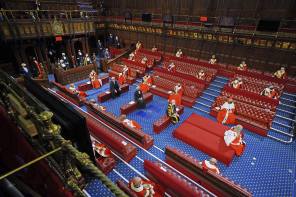
According to figures from the Department for Work and Pensions, published today (October 26), opt-outs have fluctuated between January 2020 and August 2022, with the rate of those choosing not to save into pensions rising since March this year from 8.7 per cent to 10.4 per cent in August.
However, the stopping saving rate, which measures the proportion of AE members who decide to opt out, cease saving or leave employment, was higher in mid-2020 and mid-2021 than it was in August 2022, where it stood at 3.1 per cent.
The cessation rate, defined as the proportion of actively saving members who decide to stop saving into a pension, rose from 0.49 per cent to 0.57 per cent between January 2020 and August this year.
Proportion of opt outs, cessations and stopping saving to August 2022

Source: DWP
These figures are cause for "cautious celebration", said head of pensions and savings at Broadstone, Rachel Meadows.
"While many people still face a tough winter ahead, there is little evidence so far this year of a notable uptick in pension opt-outs."
Someone on a salary of £35,000, paying 5 per cent, would reduce employee contributions by £145.83 if they opted out of the scheme, however that means they would lose the matched contribution from their employer.
This would result in an overall loss of £350.04 over the course of the year, according to Broadstone.
Care needs to be taken to mitigate further opt outsHelen Morrissey, HL
“We hope that people will recognise the importance of saving for retirement and view opting-out of pension contributions as a last resort," Meadows added.
Jon Greer, head of retirement policy at Quilter said the introduction of AE was arguably one of the “most important and transformational” changes to pension policy in the last decade, however it faces its biggest challenge yet as the cost of living crisis continues.
“There is a risk that as finances get stretched people choose to opt out of funding their retirement and choose to have that cash in their pocket today,” he said.
“One of the reasons AE has worked is because it relies on people’s inertia but when push comes to shove and people are financially struggling the worry is they take action and reduce or stop funding their retirement plans altogether.”
These opt-out rates are low but have been creeping up amid the pandemic and cost of living crisis, highlighted Helen Morrissey, senior pensions and retirement analyst at Hargreaves Lansdown.




